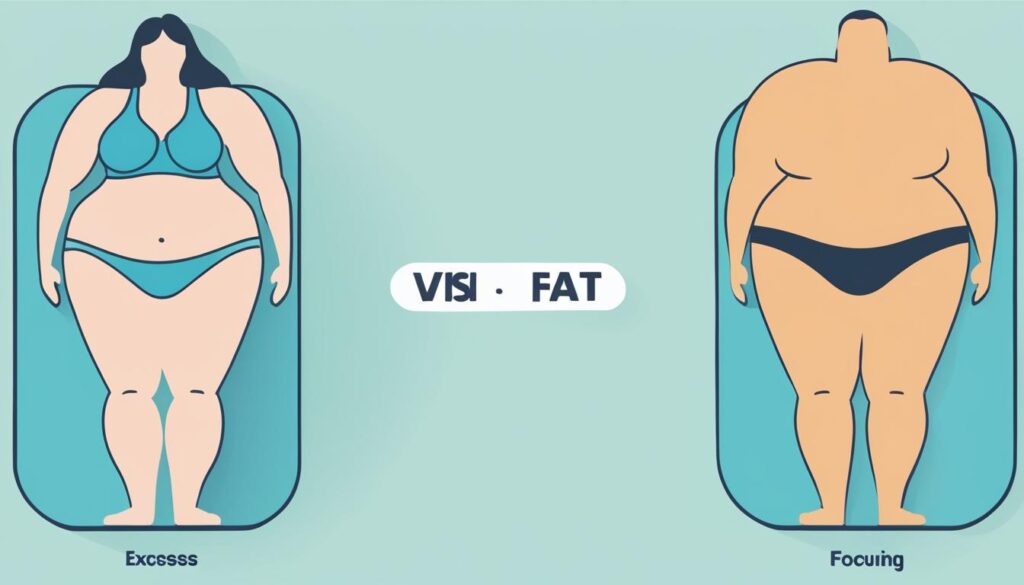When embarking on a weight loss journey, it's natural to wonder how long it will take for others to notice your progress. Understanding the timeline for when visible changes occur can help manage expectations and provide motivation along the way.
Weight loss progress is a gradual process that occurs when you create a calorie deficit through a combination of diet and exercise. Initially, the body burns through glycogen stores, resulting in rapid weight loss. However, this primarily consists of water weight. True fat loss occurs as the body taps into stored fat for energy.
The duration for others to notice your weight loss can vary depending on several factors. These include your starting weight, body type, and how often they see you. On average, people tend to notice weight loss when you have lost about 10% of your starting weight. However, keep in mind that this timeline can vary based on individual circumstances.
It's essential to focus on sustainable weight loss rather than seeking instant recognition. A gradual transformation takes time, and it's important to prioritize your overall health and well-being instead of solely relying on external validation.
Key Takeaways:
- Weight loss results are not immediately noticeable to others and require patience and consistency.
- Creating a calorie deficit through a balanced diet and regular exercise is the key to sustainable weight loss.
- Visible changes are generally observed when you have lost approximately 10% of your starting weight.
- Factors such as body type, weight distribution, and individual perception play a role in how quickly others notice weight loss.
- Focusing on overall health improvements and celebrating non-scale victories is important throughout your weight loss journey.
Understanding Weight Loss and How It Works
To understand how long it takes for others to notice your weight loss, it's important to understand how weight loss works. Weight loss occurs when you consistently consume fewer calories than your body needs, creating a calorie deficit. This causes the body to burn stored fat for energy, resulting in weight loss. Initially, the body burns glycogen stores for energy, leading to rapid weight loss. However, this is mostly water weight. True fat loss occurs as the body taps into its fat stores. The body's energy needs decrease as weight is lost, requiring adjustments to the calorie deficit. Exercise can help with weight loss by increasing energy expenditure. It's important to maintain a balance between calorie intake and exercise for effective and sustainable weight loss.
Factors Affecting the Noticeability of Weight Loss

Several factors can influence how long it takes for others to notice your weight loss. These factors include:
- Starting weight: Losing a percentage of your starting weight is more noticeable than losing the same amount of weight on a smaller frame.
- Body type: Different body types carry weight differently, and this can impact how visible weight loss is.
- Weight distribution: Some individuals may lose fat in less noticeable areas first, which can delay the visible changes.
- Frequency of interaction: People who see you regularly may notice smaller, incremental changes in your appearance, while those who see you less frequently may notice more significant differences.
- Body composition: The distribution of muscle and fat in your body can affect how noticeable weight loss is.
- Body size perception: People may perceive changes in their own bodies differently than others, so what is noticeable to one person may not be as noticeable to another.
Understanding these factors can help you manage your expectations and recognize that the visibility of weight loss varies from person to person. It's important to focus on your own progress and well-being rather than seeking validation from others.
Visual Representation:
| Factors Affecting Noticeability | Impact on Weight Loss Visibility |
|---|---|
| Starting Weight | More noticeable to lose a percentage of starting weight |
| Body Type | Weight loss visibility varies based on body type |
| Weight Distribution | Changes may be delayed if fat loss occurs in less noticeable areas |
| Frequency of Interaction | Regular interaction may lead to gradual notice of changes |
| Body Composition | Individuals with higher muscle mass may have more visible weight loss |
| Body Size Perception | Perception of changes may vary among individuals |
By considering these factors, you can better understand why weight loss may be more or less noticeable to others and focus on your own progress and well-being throughout your weight loss journey.
The Timeframe for Others to Notice Weight Loss
The timeframe for others to notice your weight loss can vary based on individual circumstances. On average, people tend to notice weight loss when you've lost around 10% of your starting weight. However, this is not a fixed rule and can vary depending on factors such as body type, weight distribution, and individual perception.
Some people may notice changes sooner, while others may take longer to notice. It's important to keep in mind that everyone's perception of body image and weight differs, and what may be noticeable to one person may not be as noticeable to another. Focus on your own progress and overall health rather than seeking validation from others.
Remember, weight loss is a personal journey, and the most important thing is how you feel about yourself and your own body. It's not about meeting others' expectations or conforming to societal norms. Embrace your own unique journey and celebrate the positive changes you see and feel.
When it comes to weight loss, patience is key. It takes time for your body to adjust and for others to truly see the changes. Don't get discouraged if it takes longer than expected for others to notice your weight loss. Stay focused on your goals, continue making healthy choices, and trust the process.
| Factors Affecting Noticeability of Weight Loss | Estimated Timeframe |
|---|---|
| Starting Weight | Depending on the starting weight, it may take longer for noticeable changes to occur. |
| Body Type | Different body types may show weight loss differently, impacting how noticeable it is to others. |
| Weight Distribution | Weight loss may occur in different areas at different rates, affecting the overall visibility of changes. |
| Frequency of Interaction | The more often people see you, the more likely they are to notice gradual changes over time. |
| Individual Perception | Individuals have different perceptions of body image and weight, which can impact how noticeable weight loss is to others. |
Factors Influencing Self-Perception of Weight Loss

When it comes to our own weight loss progress, we often underestimate the changes happening in our bodies. Self-perception of weight loss can take time to catch up with the physical changes we're experiencing. However, there are certain factors that can indicate progress and help us acknowledge our achievements along the way.
One factor influencing self-perception is body image. We may have a distorted perception of our own body size and weight, which can make it difficult to recognize the changes happening. It's important to be mindful of this and remind ourselves that progress is happening, even if we may not fully see it yet.
Clothing fit is another significant factor. As we lose weight, our clothing may start to fit differently. Clothes that were once tight may become looser, indicating that we're making progress. Paying attention to these changes can help boost our self-perception and reinforce our weight loss journey.
Physical changes and improvements in our abilities also play a role in self-perception. As we lose weight, we may notice increased energy levels, better sleep quality, and improved overall health. These positive changes not only contribute to our well-being but also serve as tangible evidence of our weight loss journey.
To illustrate the factors influencing self-perception of weight loss, consider the following table:
| Factors | Impact on Self-Perception |
|---|---|
| Body Image | May underestimate changes |
| Clothing Fit | Indicates progress |
| Physical Changes | Boosts self-perception |
As we continue our weight loss journey, it's essential to celebrate non-scale victories and focus on our overall health. While self-perception may take time to catch up with the changes happening in our bodies, staying committed to our goals and prioritizing our well-being will ultimately lead to a more positive body image and a stronger sense of self. Remember, the journey to a healthier body goes far beyond just the numbers on the scale.
The Role of Weight Loss Plateaus
Weight loss plateaus are a common occurrence during the weight loss journey. These plateaus occur during the maintenance phase, where the body adjusts to a new set point. As weight is lost, the body slows down metabolism to conserve energy and store fat. Plateaus are a normal part of the weight loss process and can be overcome by making adjustments to diet, exercise, and lifestyle. It's important to stay consistent and focus on long-term goals during plateaus to continue progressing towards your desired weight loss.
The body's set point, which is the weight range that our bodies naturally strive to maintain, can make weight loss more challenging as we get closer to it. The body has a natural resistance to change and may slow down weight loss to protect against perceived threats of starvation.
“During a weight loss plateau, it's crucial to maintain a positive mindset and stay committed to your weight loss journey. Remember that plateaus are temporary, and with persistence and adaptability, you can overcome them.”
To overcome weight loss plateaus, it's important to make adjustments to your diet, exercise routine, and overall lifestyle. Here are some strategies that can help:
- Adjust your calorie intake: Consider reducing your calorie intake slightly to create a larger calorie deficit, but ensure you're still consuming enough nutrients to support your body's needs.
- Vary your exercise routine: Incorporate different types of exercises and increase the intensity or duration of your workouts to challenge your body and stimulate further weight loss.
- Focus on strength training: Building muscle through strength training can help increase your metabolism and promote fat loss.
- Track your food intake: Keep a food diary to monitor your calorie intake and identify any areas where you may be consuming more calories than you realize.
“By making these adjustments and staying consistent, you can overcome weight loss plateaus and continue making progress towards your weight loss goals.”
The Difference between Fat Loss and Weight Loss

Fat loss and weight loss are two distinct concepts. Weight loss refers to the overall decrease in body weight, which includes water weight, muscle mass, and fat stores. Fat loss, on the other hand, specifically refers to the reduction in body fat. It's important to prioritize fat loss over overall weight loss because preserving muscle mass is crucial for maintaining long-term weight loss.
Muscle is metabolically active tissue and burns more calories at rest, contributing to a higher metabolism. By preserving or even building muscle, you can increase your body's calorie-burning potential, making it easier to maintain a healthy weight in the long run.
Tracking your body composition is key to understanding your fat loss progress. One effective method is using a body fat scale, which measures the percentage of body fat in relation to muscle mass and other components. This provides a more accurate assessment of your body's fat loss and overall composition. By focusing on fat loss rather than just weight loss, you can ensure a healthier and more sustainable approach to achieving your desired body composition.
When People Generally Notice Weight Loss

The visibility of weight loss and the timeframe for others to notice changes can vary among individuals. On average, it takes several weeks for people to observe noticeable differences in weight loss progress. However, the perception of weight loss differs depending on individual factors and the frequency of observation.
According to a common saying, it typically takes four weeks for you to notice the changes in your own body, eight weeks for your friends to notice, and twelve weeks for the rest of the world to notice. This highlights the gradual nature of weight loss and the time it takes for physical changes to become apparent.
Individual perception plays a role in how quickly weight loss is observed. Spouses or close family members may notice changes sooner due to their familiarity with your body. They may be more attuned to subtle differences in appearance. Additionally, changes in clothing can enhance the visibility of weight loss. Transitioning into better-fitting clothes can accentuate the transformation and draw attention to the changes in body shape.
Starting Your Weight Loss Journey

Embarking on a weight loss journey is an important step towards improving your health and well-being. To get started, it's crucial to create a calorie deficit by combining a balanced diet with regular exercise. By consuming fewer calories than your body needs and engaging in physical activity to burn more calories, you can initiate weight loss.
Creating sustainable lifestyle changes is key to achieving long-term success. Gradually incorporating habits such as portion control, choosing healthier food options, and increasing physical activity can make a significant difference in your weight loss journey.
While self-motivation is crucial, seeking support from a supportive weight loss program can provide valuable guidance and motivation. These programs often combine evidence-based strategies, lifestyle coaching, and medical supervision to personalize your weight loss plan and ensure your progress is on track.
Remember, embarking on a weight loss journey requires consistency and dedication. Celebrate small victories along the way and focus on overall health improvements rather than solely relying on external validation. By prioritizing your well-being and incorporating sustainable lifestyle changes, you can achieve your weight loss goals and enjoy a healthier, happier life.
| Benefit | Supportive Weight Loss Programs |
|---|---|
| Personalized guidance | These programs tailor weight loss strategies to your unique needs and goals, providing personalized guidance throughout your journey. |
| Expert advice | Qualified professionals, including lifestyle coaches and healthcare providers, offer expert advice and support to help you achieve your weight loss goals. |
| Motivation | Supportive weight loss programs provide ongoing motivation to help you stay focused and committed, even during challenging times. |
| Accountability | Regular check-ins and accountability measures keep you on track and help you stay committed to your weight loss plan. |
| Education and resources | These programs offer educational resources and tools to help you make informed decisions about nutrition, exercise, and overall lifestyle changes. |
Conclusion
The journey of weight loss is unique for every individual, and the timeline for when others notice the changes varies based on multiple factors. It's important to set realistic expectations and focus on sustainable lifestyle changes rather than seeking validation from others. While it may take time for your own perception to catch up with the physical changes, remember that the ultimate goal should be to improve your overall health and well-being.
Instead of solely relying on external recognition, celebrate non-scale victories such as increased energy levels, better sleep, and improvements in internal health markers. By adopting a holistic approach to weight loss, you can cultivate a positive body image perception and prioritize your own well-being. Remember that the most important aspect of your weight loss journey is developing sustainable habits that support a healthy lifestyle.
Embrace the uniqueness of your own path and focus on making long-lasting changes that contribute to your overall health and happiness. By prioritizing sustainable lifestyle changes and honoring your body's needs, you can achieve long-term success in your weight loss journey while fostering a positive body image perception that enhances your well-being.
FAQ
How long does it take for others to notice weight loss?
The time it takes for others to notice weight loss varies. On average, people tend to notice weight loss when you've lost around 10% of your starting weight. However, this can vary based on factors such as body type, weight distribution, and individual perception.
How does weight loss work?
Weight loss occurs when you create a calorie deficit through a combination of diet and exercise. The body burns stored fat for energy, resulting in weight loss. Initially, the body burns glycogen stores, leading to rapid weight loss. True fat loss occurs as the body taps into its fat stores.
What factors affect the noticeability of weight loss?
Several factors can influence how long it takes for others to notice your weight loss, including starting weight, body type, weight distribution, frequency of interaction, body composition, and body size perception.
How long does it take for others to notice weight loss?
The timeframe for when others notice weight loss varies. On average, it may take several weeks for people to notice changes. However, spouses or close family members may notice changes sooner due to closer familiarity with your body. Changing your wardrobe to better-fitting clothes can also enhance the visibility of weight loss.
What factors influence self-perception of weight loss?
Individuals may take longer to notice their own weight loss compared to others. Self-perception can be influenced by factors such as body image, body composition, changes in clothing fit, physical changes, and improvements in internal health markers.
What is the role of weight loss plateaus?
Weight loss plateaus are a common occurrence during the weight loss journey. These plateaus occur during the maintenance phase when the body adjusts to a new set point. Overcoming plateaus often requires making adjustments to diet, exercise, and lifestyle to continue progressing towards weight loss goals.
What is the difference between fat loss and weight loss?
Weight loss refers to the overall decrease in body weight, which includes water weight, muscle mass, and fat stores. Fat loss specifically refers to the reduction in body fat. Prioritizing fat loss is important for maintaining long-term weight loss since preserving muscle mass contributes to a higher metabolism.
When do people generally notice weight loss?
People generally notice weight loss after several weeks. The common saying suggests that it takes four weeks for you to notice your body changing, eight weeks for your friends to notice, and twelve weeks for the rest of the world to notice. However, individual perception and observation frequency play a role.
How should I start my weight loss journey?
To start your weight loss journey, create a calorie deficit through a combination of diet and exercise. Gradual lifestyle changes like portion control, choosing healthier foods, and increasing physical activity are key factors in sustainable weight loss. Supportive weight loss programs can provide guidance and motivation on your journey.
What is the conclusion?
It's important to have realistic expectations and focus on sustainable lifestyle changes rather than seeking validation from others. Self-perception of weight loss may take longer to catch up with physical changes. Focus on overall health improvements and celebrate non-scale victories. Everyone's journey is unique, so prioritize your own well-being and body image perception.




